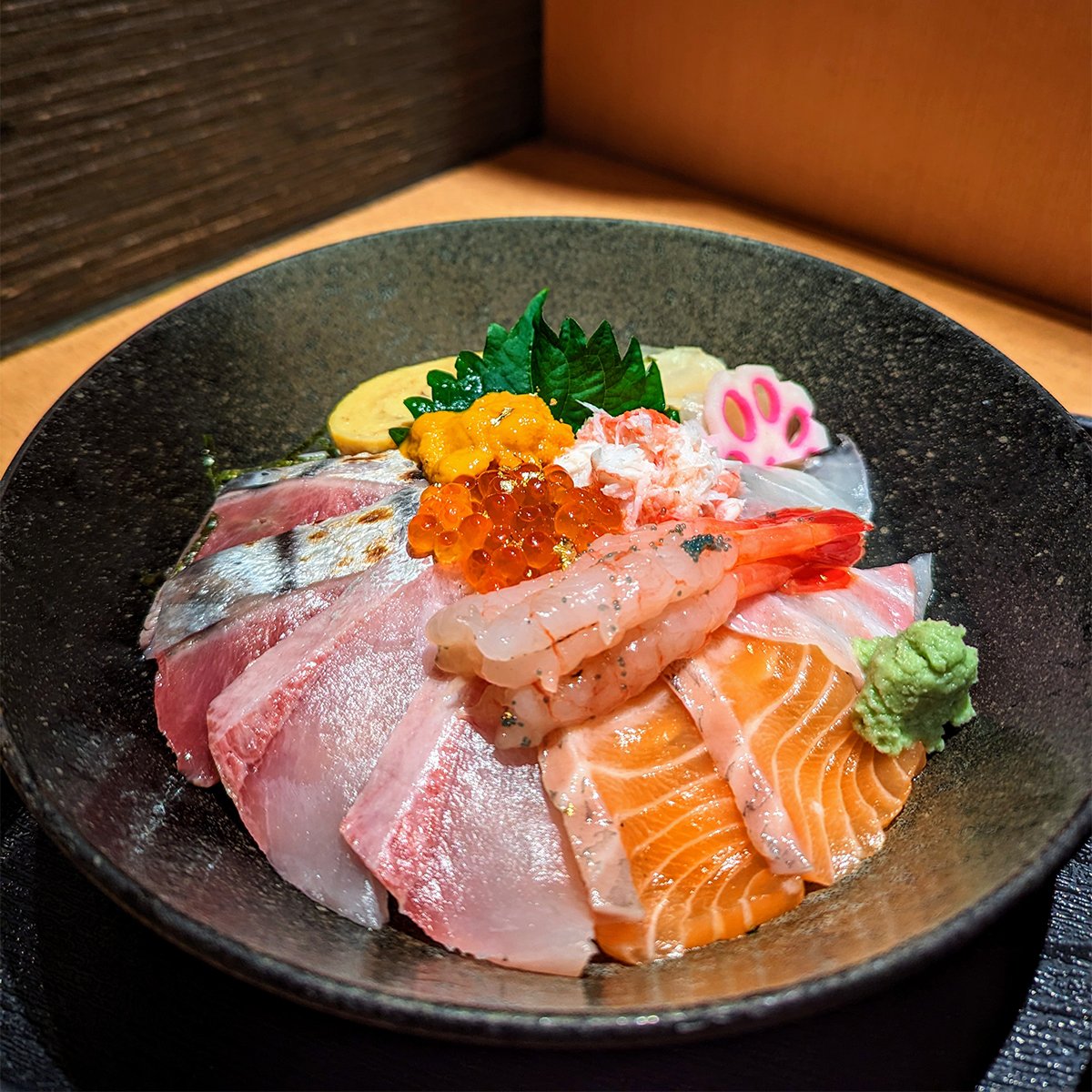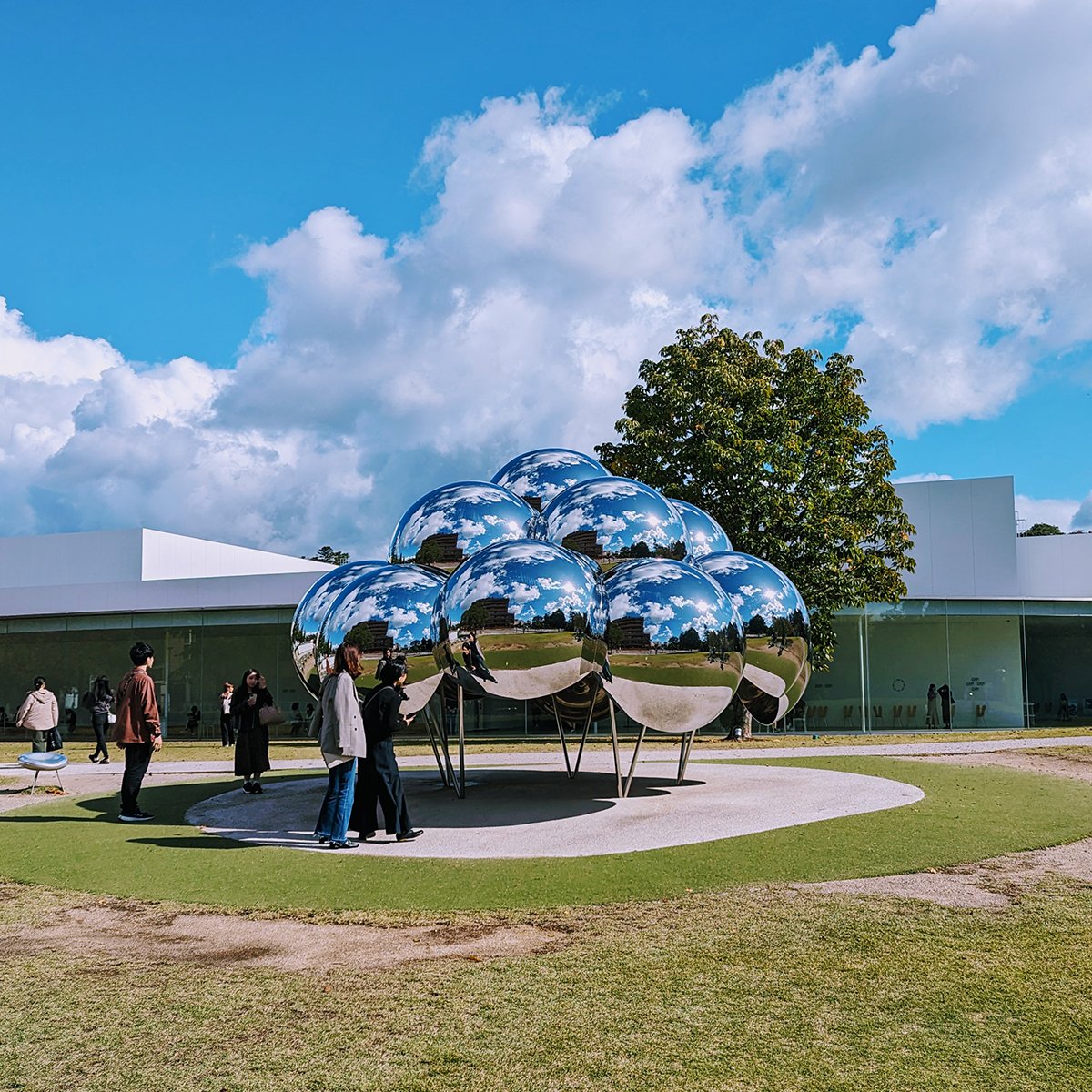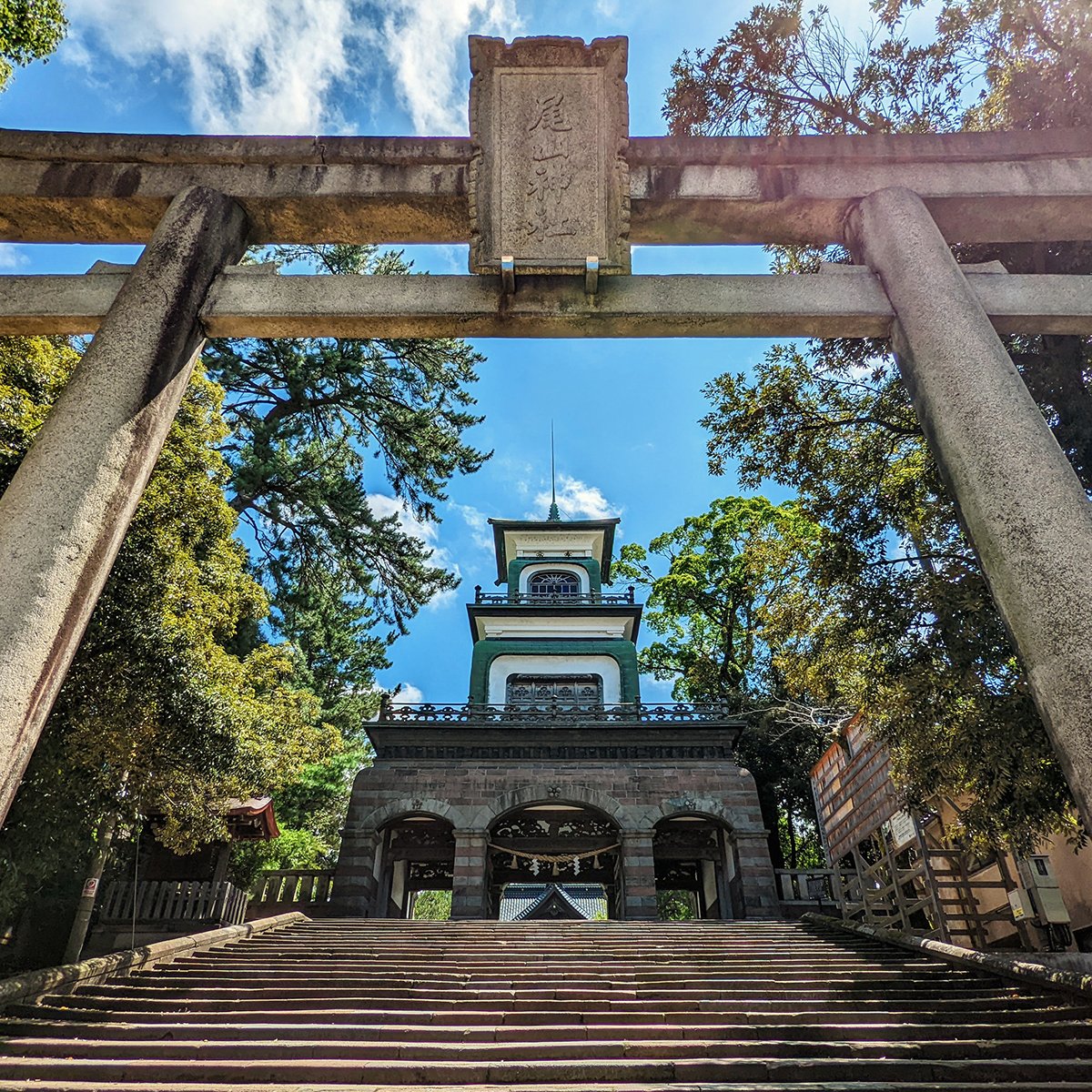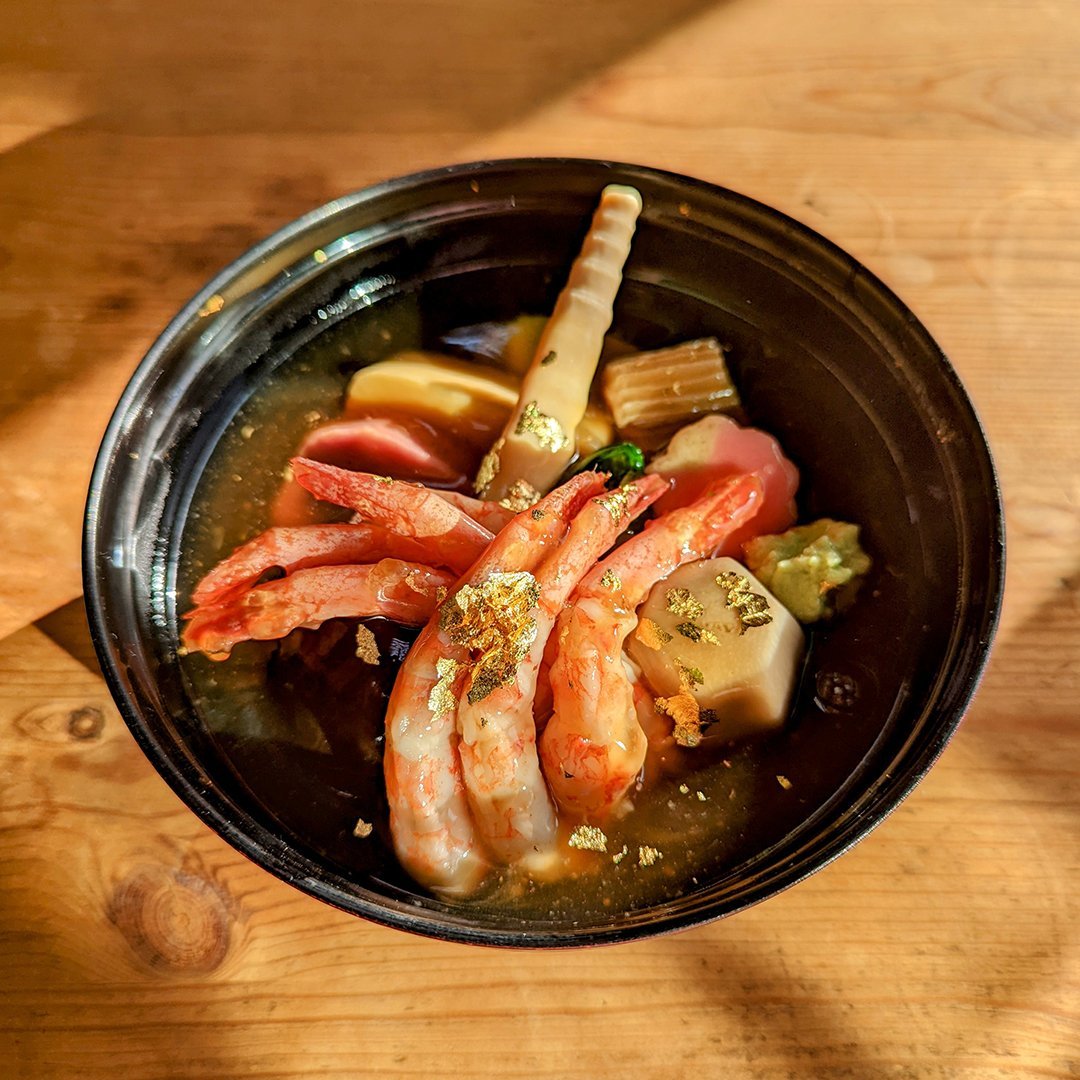Travel Guide: Kanazawa

Kanazawa is a charming castle town rich with art, crafts, and culture.
Cover photo: Standing outside iconic Tsuzumi-mon (Hand Drum Gate) at Kanazawa Station, Kanazawa, Ishikawa Prefecture, Japan (2022).
Please click on an image above for more information.
Intro
Home to 450,000 people, Kanazawa is the capital of Ishikawa Prefecture and the largest city in the Hokuriku Region, nestled upon the Sea of Japan. Boasting golden crafts, elegant gardens, and exquisite architecture, Kanazawa is simply gorgeous. Travelers are greeted by one of the world’s most beautiful train stations just upon arrival. Kanazawa charms me with every visit.
Kanazawa is Japan’s best tourist destination. The city is luxurious yet affordable, walkable yet dense with attractions, historic and inviting. Kanazawa is less crowded than other major cities, while offering the nation’s best hospitality and English accommodation.
Once Japan’s wealthiest city — after Edo (Tokyo) — Kanzawa is synonymous with the Maeda Clan, whose patronage developed the castle town into a cultural capital. As the nation’s second-largest city spared bombing in World War II, the Edo Period is truly alive here. It’s a joy to explore narrow alleys between samurai homes, meet geigi (geisha), and watch Noh theater.
History
Kanazawa was first settled as Oyama Gobo (尾山御坊) in 1547 by a group of armed egalitarian Buddhists known as the Ikko-Ikki (一向一揆). Loyal retainer to Japan’s “Great Unifier” Nobunaga Oda (織田 信長), Toshiie Maeda (前田 利家) was given authority over the vast Kaga Domain following their defeat. The Maeda Clan would rule Kaga (now Ishikawa and Toyama Prefectures) for fourteen generations, until the abolition of feudal domains in 1871.
Only the Tokugawa shogunate controlled more land than the Maeda Clan; Kaga was the largest and richest of all Japan’s domains, totaling over 250, known for its annual rice yield of hyakumangoku (百万石) or “one million koku,” worth 300 billion yen (approx. 2 billion USD). This record is still celebrated today!
At its peak, Kanazawa had a population of one million, the fourth largest city in Japan, after Edo, Osaka, and Kyoto. To appease the military dictatorship of the Tokugawa shogun, the Maeda Clan made strategic investment in arts and hospitality, inviting artisans from Kyoto and Edo.
Crafts
The legacy of Maeda’s cultural patronage lives on. Kanazawa was designated an official City of Crafts and Folk Art by UNESCO in 2009. Today, 36 traditional crafts are recognized in Kanazawa, including Kaga yuzen (textile dyeing) and Kutani yaki (porcelain ware).
The city also produces virtually all of Japan’s kinpaku (gold leaf). In fact, Kanazawa (金沢) translates to “marsh of gold.” According to local legend, a peasant was digging for potatoes when he found the rare mineral instead! While raw gold is now imported from South Africa, Kanazawa’s gold leaf is still crafted by hand, in a laborious process called entsuke. The sumptuous material decorates temples throughout the nation, including Kyoto’s famous Golden Pavilion at Kinkaku-ji.
Ishikawa Prefecture’s official mascot is my favorite: the mustachioed Hyakuman-san (Mr. Million) is dedicated to local crafts, inspired by traditional okiagari (getting-up) dolls which cannot be knocked over. There is a wonderful sculpture of the character at the souvenir shop Yaoyoroz Honpo, but you can find him everywhere.
There are so many ways to enjoy local crafts. You can admire masterpieces at the National Crafts Museum and Ishikawa Prefectural Museum of Art, visit souvenir shops to take home local goods, or make your own crafts at hands-on experiences at sites like the Kaga-Yuzen Kimono Center, Kutani Kosen Kiln, and Kinpakuya Sakuda Workshop.
Kenroku-en (Garden)
Kenroku-en is widely-regarded as the best of “Japan’s Three Great Gardens” (日本大三名園). Once private property of the Maeda Clan, this 25 acre space opened to the public in 1874, refined over 200 years.
The name Kenroku-en (兼六園) translates to “the garden of six attributes,” referring to ancient Chinese qualities for a perfect garden: spaciousness and seclusion, artifice and antiquity, water views and panoramas. It’s a sublime rarity for a garden to feature all six.
Resembling the bridge of a Japanese harp, the two-legged stone lantern Kotoji-Toro is famous as the symbol of both Kenroku-en and Kanazawa.
The everchanging landscape guarantees a new experience with each visit, from the sakura (cherry blossoms) of spring, to summer flowers, to autumn leaves, to the yukitsuri (protective snow-hangings) of winter. Note: Kanazawa is one of Japan’s rainiest cities.
Art & Architecture
Kanazawa is home to traditional architecture, including the Nagamachi Samurai District and Myouruji, a secret military outpost disguised as a temple.
Lost to several fires, the buildings of Kanazawa Castle Park were rebuilt this century with traditional techniques and materials. It’s said to be the largest castle restoration project in Japan! Reconstruction of Ninomaru (Palace) [二の丸御殿] is expected to begin within the next few years.
Along with Kyoto’s Gion, Higashi Chaya is one of Japan’s only protected geisha districts. It’s a good place to wear kimono! Don’t miss Shima, the largest teahouse in the area. There are also many souvenir shops, as well as the Kanazawa Yasue Gold Leaf Museum.
In addition to historic sights, Kanazawa includes modern designs by leading architects. SANAA’s labyrinthine 21st Century Museum is Japan’s foremost contemporary art institution, featuring Leandro Erlich’s Swimming Pool. Arrive early for a timed-ticket to enter the installation.
Dedicated to the philosopher who introduced Zen Buddhism to the world, the D.T. Suzuki Museum is a minimalist meditative space created by Kanazawa-native Yoshio Taniguchi (谷口 吉生), who also designed New York’s Museum of Modern Art and Tokyo’s Ginza Six shopping center.
Kanazawa Music Bar at Kaname Inn features beautiful lattice work and retro vibes set to vinyl records, Kanazawa, Ishikawa Prefecture, Japan (2022). Photo by Danny With Love.
Cuisine & Nightlife
Kanazawa has some of the nation’s best cuisine, including the freshest seafood I have ever tasted. A walk through historic Omicho Market is a must. I always visit Koufuku for kaisendon, raw fish on rice. With winter bringing cold Siberian winds, various stews are also popular, such as oden and jibuni.
Kanazawa is where I fell in love with hojicha, roasted green tea. The local specialty is Kaga bocha, made from roasted tea plant stems. It’s rich like chocolate. My favorite cafe is Kenjotei, designed by Kengo Kuma (隈 研吾).
As Japan’s gold capital, desserts across the city are exquisite, often featuring edible-grade gold leaf. Decorated ice cream is an especially popular local treat, perfect for photos. While gold is completely tasteless, consumption is a fun way to appreciate the delicate art form and to support local artisans.
Unfortunately, there are no dance clubs in Kanazawa, but there is no shortage of bars, especially around downtown Katamachi. My favorites include Inuwashi Sake Bar for Japanese rice wine, Kanazawa Music Bar for retro vibes set to vinyl records, and Furansu Cocktail Bar for the most inventive cocktails in Japan.
Events & Entertainment
It seems there is always something happening in busy Kanazawa. There are so many exciting — and affordable — experiences. It’s the first city where I met geisha and watched Noh theater! The Kanazawa Central Tourist Information Center frequently hosts concerts with a variety of traditional performers. Kanazawa is also home to a small but welcoming LGBT+ community. Kanazawa Rainbow Pride is held in October.
Ishikawa Prefecture’s largest annual event is the Hyakumangoku Festival, which commemorates the arrival of Toshiie Maeda into Kanazawa in 1583. The three-day festival features Japan’s best historical parade, including taiko (drums), lion dances, and acrobatic ladder climbing! It is held on the first weekend of June.
Transportation & Accommodation
Kanazawa is just a three-hour trip from Tokyo, thanks to the Hokuriku Shinkansen (bullet train). The city is dense and walkable. Public transportation is fast and cheap. Please remember, traffic moves on the left. Most major hotels are located between Kanazawa Station and downtown Katamachi. Hotel Mystays Kanazawa Castle includes a refreshing sento (bath) available to guests and Kanazawa Capsule Hotel Musashimachi is a great option for solo travelers.
Top Attractions
Kenroku-en (Garden)
Higashi Chaya (Geisha & Gold District)
21st Century Museum of Contemporary Art
Kanazawa Castle Park
Nagamachi (Samurai District)
Omicho Market
Ishikawa Prefectural Noh Theater
Myouruji (Disguised Military Outpost) RESERVATION REQUIRED
National Crafts Museum
D.T. Suzuki Museum
Additional Ideas
UNESCO World Heritage Sites Shirakawa-go and Gokayama are also nearby, in Gifu Prefecture. The Hokuriku Region has grown increasingly popular within the last decade. Neighboring Fukui — my new home — is famous for dinosaurs, nature, and Buddhism. The Hokuriku Shinkansen will extend into the prefecture next year!






























